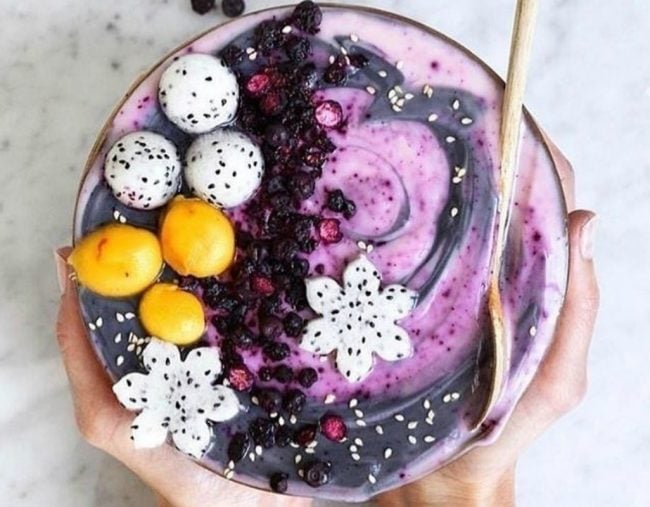
Everything about an acai bowl looks healthy, the nuts, muesli and the pretty fruit on top all make them very ‘grammable– but are they actually as healthy as we’re told they are?
If you haven’t already seen one on social media, acai (pronounced ahh-sigh-ee) bowls are a beautiful looking purple puree of blended acai and fruit, topped with luscious looking ingredients including granola, peanut butter and more fruit. Acai bowls rose to fame for not only being delicious-looking, but also due to potential health benefits. Acai has been reported to be high in antioxidants, improve cholesterol levels, boost brain function and even have an anti-cancer effect. But how do they really stack up?
THE PROS
Healthy ingredients.
Innocently enough, the acai bowl does contain a mixture of healthy, natural ingredients. There’s potential to get a serve of fruit or two, some heart healthy fats, if topped with chia seeds or nut butter and some wholegrains if the granola used is oat based.
The acai berry itself.
The acai berry is in fact, legitimately high in nutrients and a strong source of antioxidants. Acai berries contain almost ten times the levels of antioxidants found in blueberries. Antioxidants help to improve heart health, aid in digestion and prevent against ageing and inflammation.
Acai Berries are also low in sugar and high in fibre, so when we look at the fruit alone, it holds great potential. The unfortunate thing is that acai comes from the amazon and is highly perishable, so it is often pureed or powdered and mixed with sugar to prolong its shelf life, this means that some of the phytochemicals, fibre and health benefits of acai are compromised in the process.





























































































